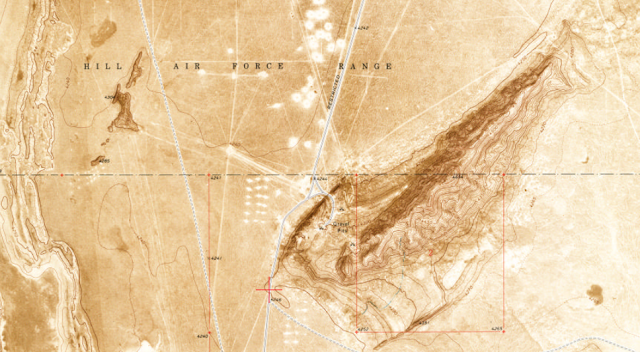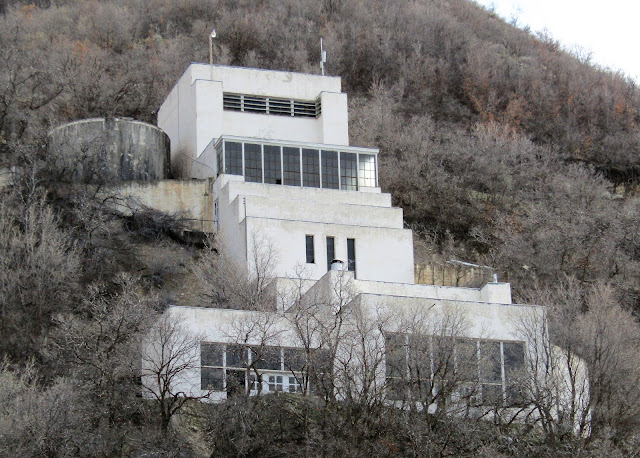Crystal Geyser
by Peter
 |
| A historic photo of Crystal Geyser from the mid-20th Century. Image is in the public domain. |
While undertaking his famous expedition of the Green and Colorado Rivers in 1869, John Wesley Powell noted that some inactive springs had created curious mineral deposits. These deposits consisted of travertine shelves running from the springs down to the Green River (like the travertine springs at Cascade Springs).
 |
| Orange travertine at Crystal Geyser. Attribution: By Alan Vernon [CC BY 2.0 (http://creativecommons.org/licenses/by/2.0)], via Wikimedia Commons. |
Over sixty years later, these same deposits attracted the attention of a petroleum geologist from Denver, Glen M. Ruby. Ruby drilled an exploratory well looking for petroleum on the east bank of the Green River, about 4 miles south of the town of Green River. At about 2,600 feet in depth, Ruby encountered a volume of water and gas so great he was forced to abandon the well.
Without knowing of its existence, Ruby had tapped into a pocket of carbon dioxide-saturated water. The pressure of the carbon dioxide coming out of solution (or exsolving) forced regular bursts of cold water up the bore hole, creating a man-made, cold water geyser. The geyser, sometimes called the soda pop geyser, or more commonly Crystal Geyser, quickly became a popular destination for locals.
Initially, the geyser would erupt every 15 minutes to a height of 80 feet, and every 9 hours to a height of nearly 150 feet. This eruption pattern, based on the rate of recharge of carbon dioxide in the brine at the bottom of the bore hole, has changed wildly over the years, increasing the time between eruptions, but also their duration. In general, however, the height of the eruptions has decreased over time. Eruptions now are generally under 20 feet, with most not reaching more than 8 feet.
 |
| If you're lucky enough to catch an eruption now, it will probably look something like this. This photo is in the public domain. |
The causes for the decrease in height are not well understood. Possibilities include visitors throwing rocks down the bore hole in an effort to spur an eruption and nearby seismic activity.
Interestingly, the Crystal Geyser is still studied for the insights it might yield on the behavior of carbon dioxide intentionally trapped underground to reduce power plant emissions (Carbon Capture and Storage or CCS). This technology injects carbon dioxide from (particularly coal) power plants into salt domes or other impermeable geological features. The worry, of course, is what would happen if the gas works its way back out some day. The result could be a delightful tourist attraction.
Green River isn't a major tourist destination, although you can go rafting on the Green, play golf at the state park, and visit the John Wesley Powell River History Museum. Similar to the Burr Trail, there is a lot of uranium mining history in the general area. Ray's Tavern has excellent burgers, and the Tamarisk is pretty good, too.
I've stayed at the Holiday Inn Express and Comfort Inn for a week each, both of which were fine, if possibly slightly below the standard of those chains in larger cities. There are also other options.
Note: A lot of my understanding of the mechanics of the Crystal Geyser comes from "Characteristics of CO2-driven cold-water geyser, Crystal
Geyser in Utah: experimental observation and mechanism
analyses" by W.S. Han, M. Lu, B.J. McPherson, E.H. Keating, J. Moore, E. Park, Z.T. Watson, and N.-H. Jun in Geofluids (2013) 13, 283–297.


Comments
Post a Comment